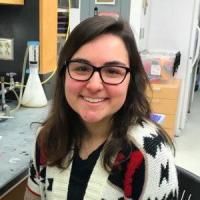Regulated spindle orientation buffers tissue growth in the epidermis.
Date
2019-10
Journal Title
Journal ISSN
Volume Title
Repository Usage Stats
views
downloads
Citation Stats
Abstract
Tissue homeostasis requires a balance between progenitor cell proliferation and loss. Mechanisms that maintain this robust balance are needed to avoid tissue loss or overgrowth. Here we demonstrate that regulation of spindle orientation/asymmetric cell divisions is one mechanism that is used to buffer changes in proliferation and tissue turnover in mammalian skin. Genetic and pharmacologic experiments demonstrate that asymmetric cell divisions were increased in hyperproliferative conditions and decreased under hypoproliferative conditions. Further, active K-Ras also increased the frequency of asymmetric cell divisions. Disruption of spindle orientation in combination with constitutively active K-Ras resulted in massive tissue overgrowth. Together, these data highlight the essential roles of spindle orientation in buffering tissue homeostasis in response to perturbations.
Type
Department
Description
Provenance
Citation
Permalink
Published Version (Please cite this version)
Publication Info
Morrow, Angel, Julie Underwood, Lindsey Seldin, Taylor Hinnant and Terry Lechler (2019). Regulated spindle orientation buffers tissue growth in the epidermis. eLife, 8. p. e48482. 10.7554/elife.48482 Retrieved from https://hdl.handle.net/10161/25870.
This is constructed from limited available data and may be imprecise. To cite this article, please review & use the official citation provided by the journal.
Collections
Scholars@Duke

Taylor Hinnant

Terry H. Lechler
My lab is interested in understanding how tissue architecture and physiology are controlled. We study this in a variety of organ systems, including the skin the gut, and with approaches ranging from in vitro reconstitution to in vivo mouse models. Our goal is to understand the underlying cell biology controlling tissue development and function. We are particularly interested in the roles of cell-cell interactions, adhesion and the cytoskeleton in the control of stem cell fate and differentiation.
Unless otherwise indicated, scholarly articles published by Duke faculty members are made available here with a CC-BY-NC (Creative Commons Attribution Non-Commercial) license, as enabled by the Duke Open Access Policy. If you wish to use the materials in ways not already permitted under CC-BY-NC, please consult the copyright owner. Other materials are made available here through the author’s grant of a non-exclusive license to make their work openly accessible.
